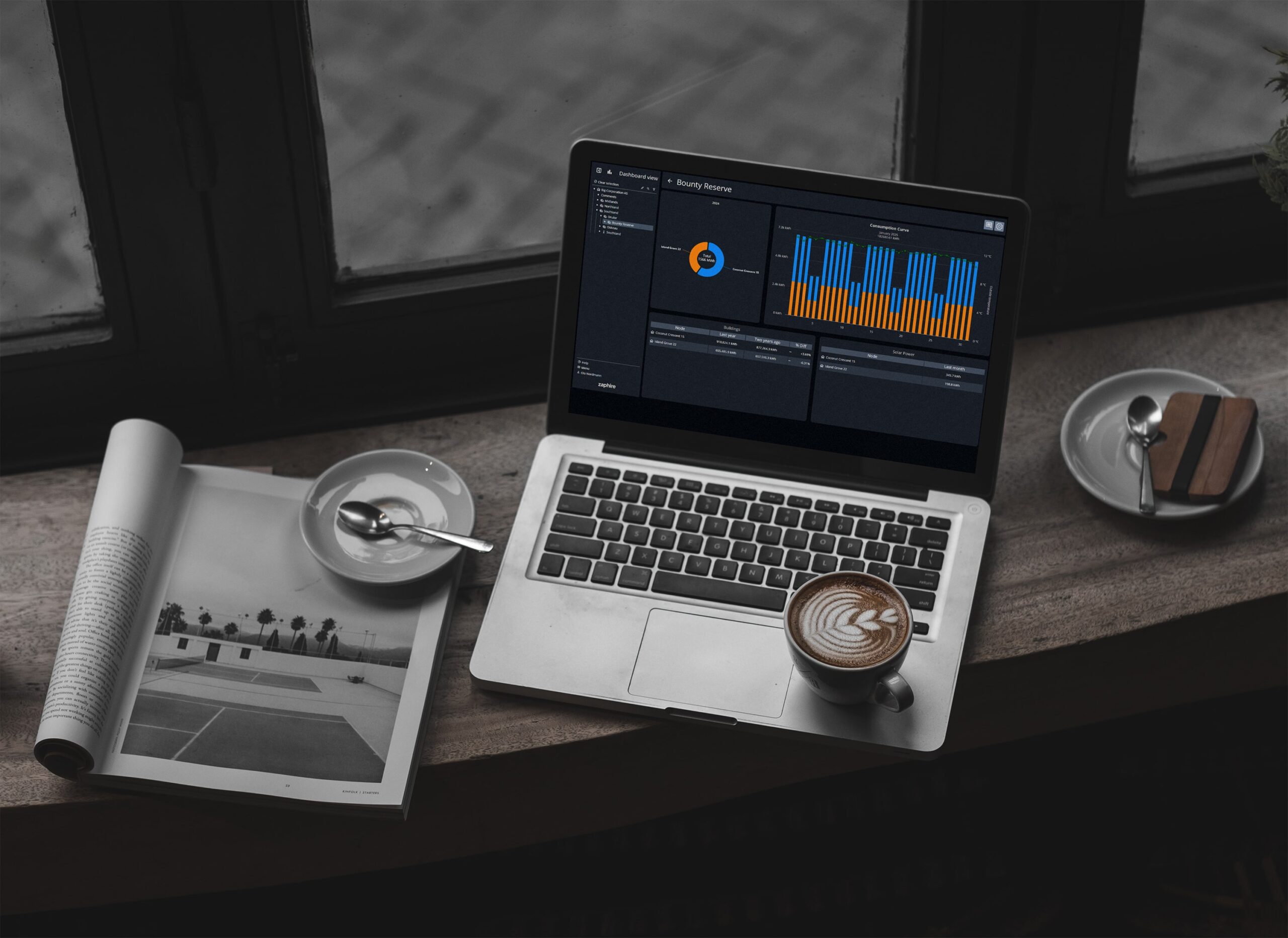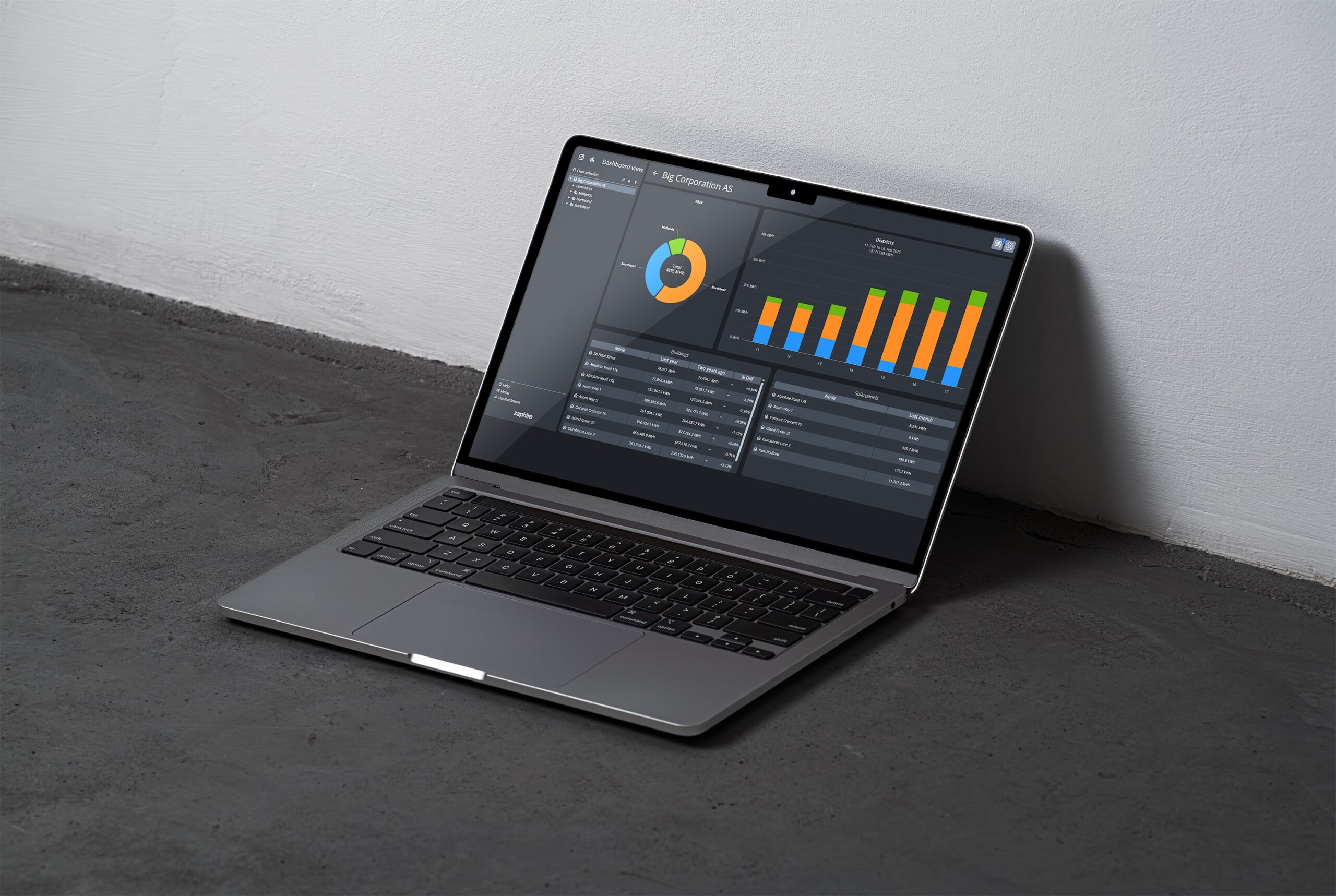What is a BMS?
Building automation is about automating and coordinating the technical installations in a building, such as ventilation, heating, cooling, lighting, water systems and security. The goal is to ensure efficient operation, reduced energy consumption and a healthy indoor climate for occupants.
The tool that makes this possible is a Building Management System (BMS). The BMS functions as the building’s “control center”, where all information is gathered on a single platform and gives facility staff complete overview and control.
How does a Building Management System work?
A Building Management System (BMS) is made up of several modules that monitor and control the various technical systems in the building. All data is collected on one platform, so that facility staff can track energy use, indoor climate and security in real time.
The system functions both as a monitoring tool and as an active control unit. Monitoring can also be expanded with an Energy Monitoring System (EMS), which provides access to historical data and detailed energy analysis. The BMS can then automatically adjust heating, ventilation, cooling, lighting and other functions based on sensors, usage patterns and predefined rules. In addition, the system alerts staff in case of faults or deviations, allowing proactive instead of reactive management.
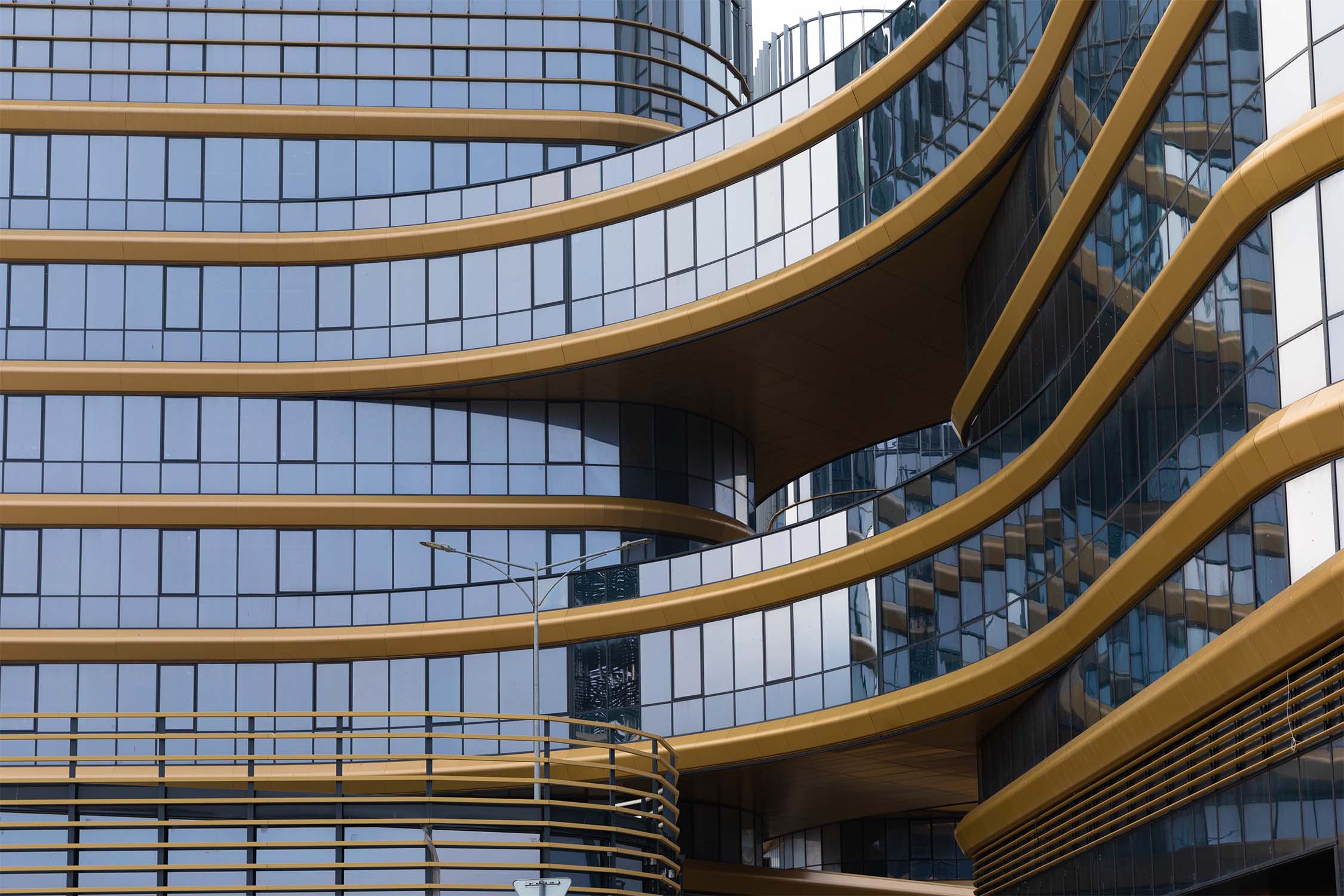
BMS for heating, ventilation and cooling (HVAC)
HVAC systems (Heating, Ventilation and Air Conditioning) often account for the largest share of energy consumption in a building. With a building automation system, these can be controlled more precisely and efficiently.
Temperature, air quality and ventilation are continuously adjusted based on usage patterns, weather data and sensor measurements. The result is improved comfort for users and lower energy costs for owners and operators.
Lighting and energy use
Lighting is a major energy component in modern buildings. Using sensors and automation, the system can adjust lighting according to occupancy, time of day or natural daylight.
Power consumption is continuously monitored, giving facility staff insights into when and where energy is being used. This information makes it easier to implement targeted measures to reduce consumption.
Security and access control with BMS
A BMS can be integrated with access control, alarm and video surveillance systems. This provides facility staff with better oversight of the building’s security and allows fast response to incidents.
In practice, this can include monitoring and controlling doors, gates and other access points, where sensors and automation contribute to increased safety and control.
Integrations with other systems
A flexible Building Management System can be integrated with many other technical systems in a building, such as elevators, energy meters and smart sensors. This provides a holistic overview of the building’s condition and performance.
When all systems are gathered on one platform, operations and maintenance become easier to manage, while enabling more efficient and sustainable property management.
In Zaphire BMS, it is possible to integrate elevators and smart sensors, so the system automatically sends fault messages and alerts when deviations occur. This makes operations and maintenance easier to handle proactively.
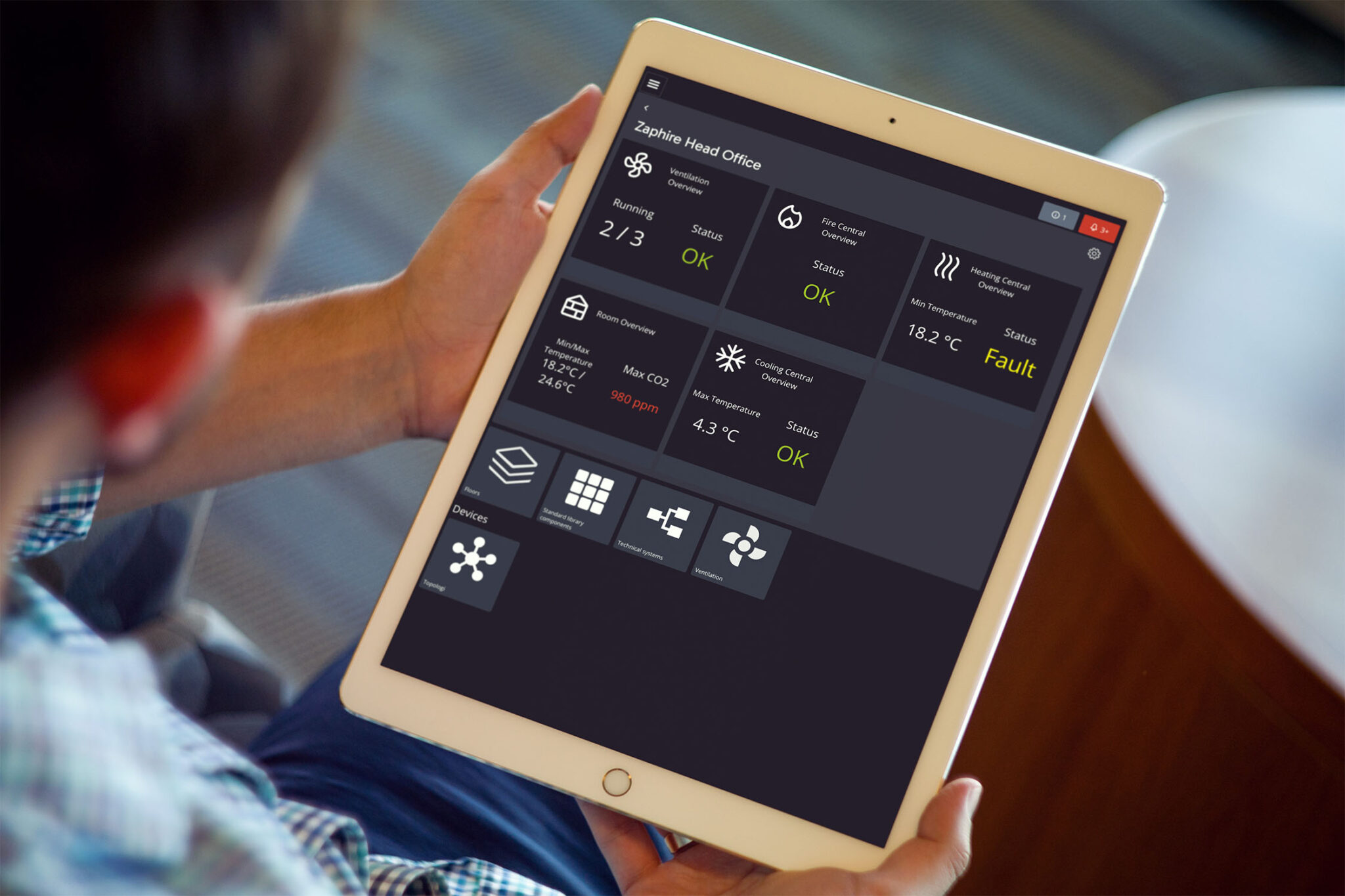
Why is a BMS important for modern buildings?
A BMS is more than just a technical control system, it is a key factor in creating smarter, more sustainable and cost-efficient buildings.
Building automation makes it possible to reduce energy use, improve indoor climate and create safer environments for occupants. At the same time, facility staff gain better insights into how the building actually performs, providing a foundation for both short-term savings and long-term value creation.
Energy efficiency and sustainability
A BMS makes it possible to automate and optimize the operation of technical systems, so that energy consumption is reduced without compromising comfort. The system adjusts heating, cooling, ventilation and lighting according to actual demand, ensuring energy is only used where needed.
Reduced energy consumption not only lowers costs but also decreases greenhouse gas emissions. This is crucial for property owners who want to meet stricter environmental requirements and achieve certifications such as FutureBuilt.
Cost savings in operations
A BMS contributes not only to lower energy bills but also to more efficient operations and maintenance. With better insight into building performance, maintenance tasks can be planned proactively rather than waiting for failures.
This reduces the risk of unexpected downtime and costly repairs. Automation also frees up time from manual monitoring and reporting, enabling staff to focus on more value-adding tasks. The result is significant savings – both in the short term through reduced energy use and in the long term through smarter operations.
“ Zaphire is exceptionally user-friendly compared to other similar systems. We have a complete overview, and everything is accessible on any device—whether smartphones, tablets, or computers"
Fredy Rafael Lumentut
Automation Specialist, Bærum Kommune
Better indoor climate and comfort
A BMS ensures that the indoor climate is always adapted to user needs. Temperature, air quality and lighting conditions can be automatically adjusted based on time of day, occupancy and sensor data.
The result is a healthy and comfortable environment that promotes well-being and productivity. In offices, schools and healthcare facilities this is especially important, since indoor climate directly affects health, concentration and performance. A good indoor climate can also reduce sick leave and make the building more attractive for both occupants and tenants.
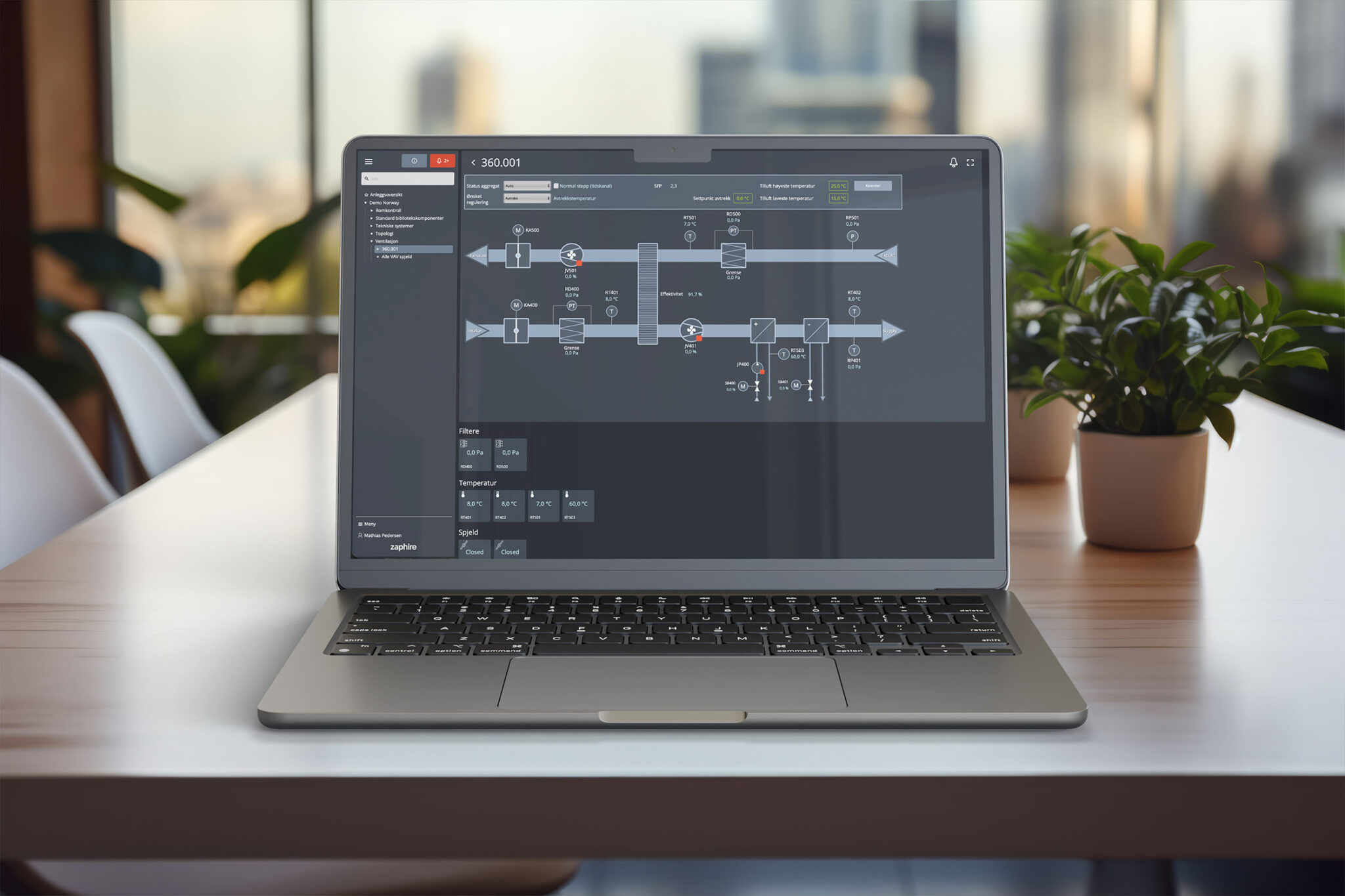
How to choose the right BMS?
When investing in a new BMS, whether as an end customer or system integrator, it is important to consider both current needs and future requirements. The system should not only provide overview and control today but also be able to evolve with technology, regulations and new user demands.
User-friendliness and accessibility
A BMS should have an intuitive and clear interface, so that facility staff can easily monitor and control the building. Many modern solutions are cloud-based, offering secure access via PC, tablet or mobile – anytime and anywhere.
For system integrators, it is particularly important to choose a solution that is cost-effective, flexible and easy to configure. A user-friendly building automation system means lower installation and operating costs, and can therefore make it easier to win tenders where price and efficiency are decisive.
Openness and integration capabilities
Choose a solution based on open standards that can integrate with both existing and future systems. This provides flexibility and ensures your investment remains relevant as technology evolves.
In Zaphire BMS, sensors can be connected via BACnet, MODBUS TCP or third-party APIs. This makes it easy to integrate both new and existing meters into the same system. All information is securely transmitted in encrypted form to Zaphire, where it is processed, structured and presented in intuitive dashboards.
Data security and privacy
A BMS collects large volumes of data, and it is crucial that this data is handled securely and in compliance with GDPR and other relevant requirements. The provider should offer robust solutions for data storage, access control and cybersecurity, ensuring both the building and users are protected.
Many property owners and public sector clients today require system providers to use protocols certified for BACnet or equivalent building automation standards. This ensures that systems can be safely and seamlessly integrated across vendors. Zaphire uses a BACnet-certified protocol and thus meets these requirements, ensuring both data security and future flexibility.
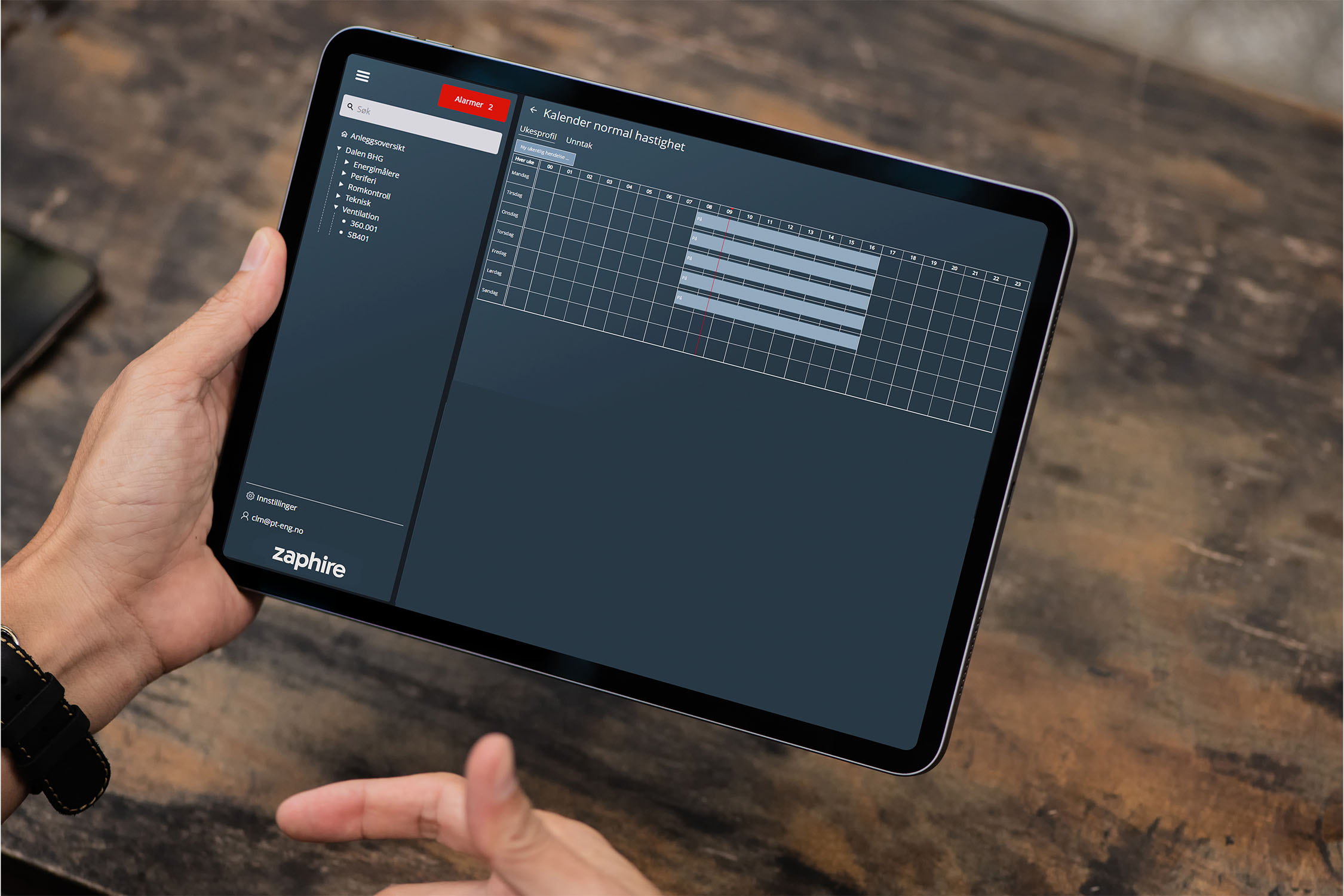
Zaphire BMS
Zaphire delivers a cloud-based Building Management System, developed to meet the demands of future buildings. The platform provides complete overview of all technical systems and makes it easy to monitor, analyze and optimize operations, energy use and indoor climate – all in one solution.
The system supports seamless integration with sensors, meters and existing control systems, presenting real-time insights through a user-friendly and responsive interface. This makes it possible to quickly identify areas for improvement and implement measures that deliver both economic and environmental benefits.
Zaphire is designed with focus on user-friendliness, flexibility, scalability and data security. The solution works equally well in new buildings as in renovated commercial properties, and can easily be adapted to different portfolios. As an independent platform without ties to specific vendors or system integrators, Zaphire gives property owners and managers full freedom and control.
